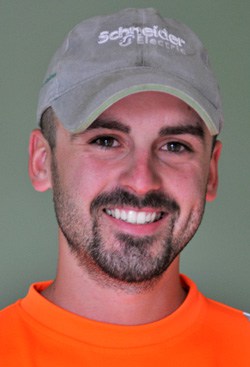Objections from surrounding neighbours prompted township councillors to defer further discussion on a development proposal for the corner of Ferris Drive and Greenwood Hill Road in Wellesley.
More than 50 people, mostly residents of Schweitzer Crescent and Ferris Drive, crammed into council chambers on June 24 to demonstrate the neighbourhood consensus: They are vehemently against the construction of 48 new homes in their community.
“This type of development is a bad idea,” said Schweitzer Crescent resident Kim Ruthig. “In speaking to neighbours directly backing onto the site, all have indicated they realized rezoning can happen at any time, but they would never have thought that this type of result could be given serious consideration by the township, at least without better advance notice to existing residents.”
The proposal hinges on the rezoning of part of the land from institutional to urban-residential use. Amendments are also needed to allow for townhomes to be built.
But it first needs council’s approval, which opponents say should not come without traffic, noise and light studies.
“This winter I saw four incredibly close calls because of the level of the snow piles where drivers just couldn’t see the kids until they shot out onto the road,” Ben Cook of Ferris Drive said. “You add 48 units, with an average of, what?, a vehicle or two per home, that’s 96 more cars.”
Several homeowners said they purchased their property after researching the zoning of the lot in question.
“This parcel of land has been zoned as institutional since we moved in, and yes, we did due diligence, extensively before buying, querying about the status of this parcel,” Ruthig said. “Both the builder’s representative … and the former CAO (chief administrative officer) of the township, Susan Duke, explained that under the zoning bylaw, this land could only be used for what was set out in section 17 of the zoning bylaw 28/2006: Cemetery, which I’ll need someday, church, daycare centre, institutional use, library, school, public or private, hospital, clinic, nursing home or rest home, public utility facilities and services or a community centre.”
John Woods says he was misled by the homebuilder.
“The developer really pushed the fact that this was institutional, ‘it’s okay, spend your dough guys because this is going to be an upscale rural community.’ That representation would have meant nothing if in fact, on the table at that time, this type of density was put forward. I think that on a personal level, I don’t believe we would have made that financial decision.”
Ian Rawlings was the planner for the original Mill Creek Meadows development. He spoke for IBI Group on behalf of the project, countering the issues of additional traffic and noise put forward by anxious community members.
“Quite frankly, the capacity of local roads is significantly higher than what would be (needed) to accommodate both the existing community and the additional traffic from this development,” he said. “At no point has (township staff) indicated that the traffic volume from this development would be so significant as to require a traffic study, and that is why one was not prepared. In the same sense, there was no indication of a need for noise (study). Typically a noise study would be when you propose a development as we have here, and let’s say the region is concerned about the volume of traffic on Greenwood Hill Road, they would say, do a noise study to make sure you don’t have to do something with your development to respond to significant volumes of noise on that road. I have never done a noise study for a development to assess the impact of that development on a surrounding neighbourhood.”
Originally, planners set the lot aside for a church or a nursing home, but demand for such services didn’t emerge. Most of the speakers in opposition suggested the zoning remain for when such needs arise. Or, the area could be used to address the parkland shortfall noted in the community parks, recreation and culture strategic master plan presented last month.
“There is a complete lack of, we won’t say parkland because everyone likes to think of that as 16 acres of baseball diamonds and whatnot, but we could also refer to green space,” Woods said. “I know when my grandkids come over and there are lots of other small children in the area, the only place to play in the immediate area (that’s) safe in the neighbourhood, is at the back of the public school.”









